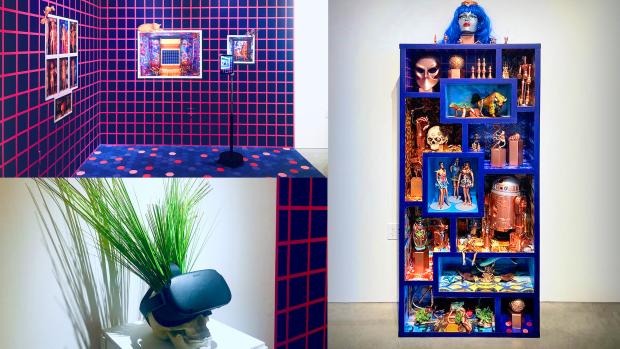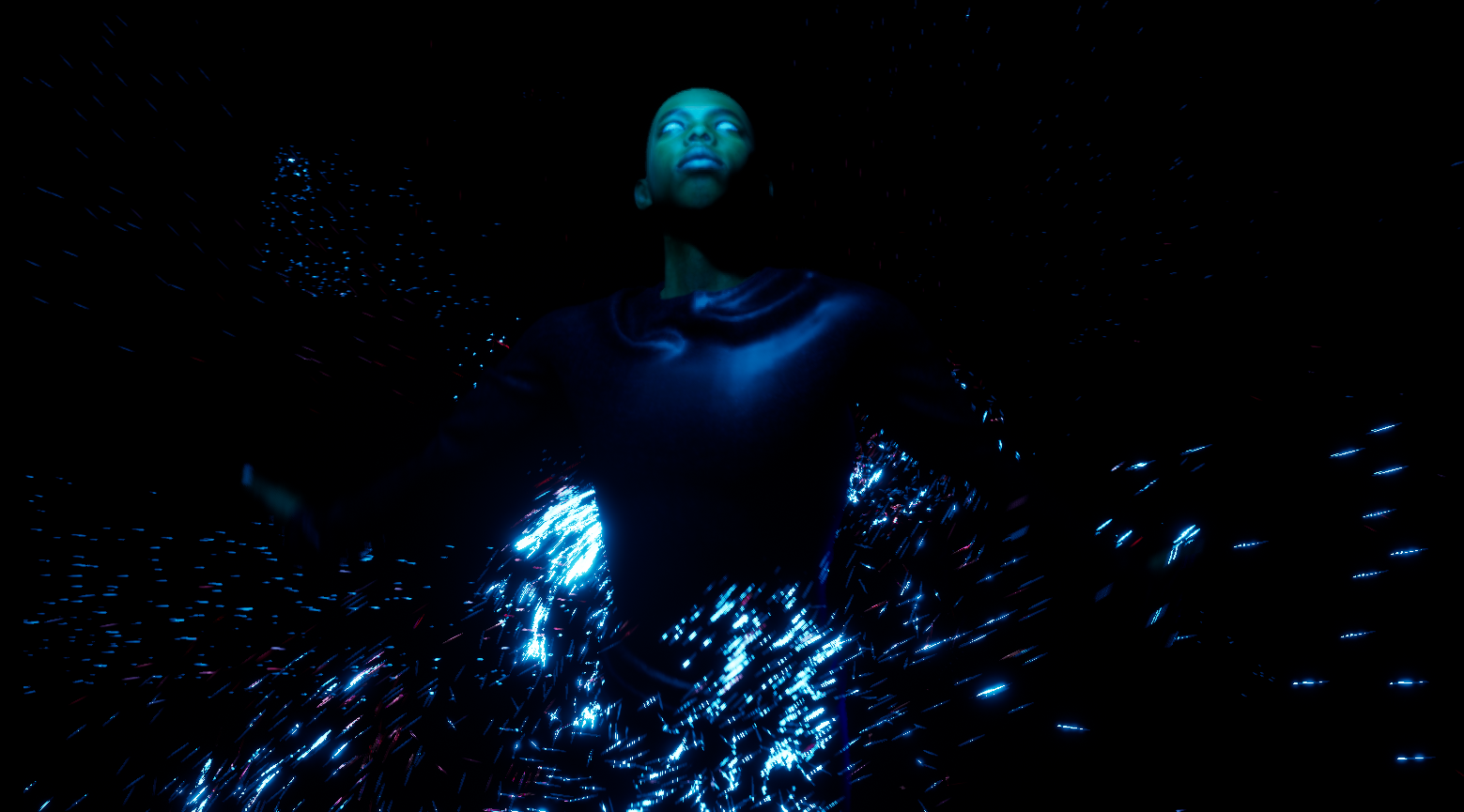Members of Tandon’s IDM community merge art and tech in an inventive incubator program

Scenes from Wwwunderkammer, an installation by Industry Professor Carla Gannis at San Francisco’s Telematic Media Arts
It’s not unusual to hear about Tandon faculty members, students, and alumni joining forces to launch start-ups, conduct collaborative research, or forge other partnerships. This month, Industry Professor of Integrated Digital Media (IDM) Carla Gannis and former IDM student LaJuné McMillian experienced the happy coincidence of being accepted into the same competitive yearlong program: NEW INC.
NEW INC is an initiative of the New York City-based New Museum and is the first museum-led cultural incubator dedicated to supporting innovation, collaboration, and entrepreneurship across art, design, and technology. Gannis and McMillian will be participating in a track called “XR: Bodies in Space,” aimed at boundary-pushing artists and technologists interested in how our physical selves, identities, and culture are represented and transformed.
The Black Movement Project

While at NEW INC, McMillian will be working on their ambitious ongoing Black Movement Project. They had become fascinated by augmented and virtual reality, creative coding, and motion capture while in Tandon’s IDM program, but while they appreciated that the technology allowed them to work in new and immersive ways, they recognized the racial bias embedded in many digital tools. This was particularly plain in the case of the character modeling programs used to create avatars and video game characters. Most either ignored or misrepresented people of color, and they became intent on building a “library” of better, more diverse options.
To that end McMillian called for volunteers of various sizes, body types, hair textures, and complexions to move about a studio and used motion capture technologies, sensors, and recording equipment to collect data. They assert, however, that their aim is not only to catalog movement, but to create community through the use of extended reality (XR), performances, workshops, conversations and tool making.
They seek to answer how Black movement can be digitized in an ethical way, how to protect the collected data and use it to serve and celebrate the community, and how to most effectively challenge digital tools that don’t share those values.
“Our bodies and movements are more than data points and avatars,” they explain. “They hold our humanity. It is time for digital spaces and tools to reflect that. It’s time for all spaces we enter to reflect that.
Wwwunderkammer
Gannis — who draws her inspiration from a wide variety of sources, including art and literary history and emerging technologies — will be working on a long-term project she calls Wwwunderkammer. (Wunderkammern, known in English as cabinets of curiosities, first became popular in mid-16th-century Europe, where collectors displayed natural specimens, diagrams, and other interesting or exotic objects; often they were part fact and part fantasy, operating at the intersection of science and speculation or superstition.)
Although Wwwunderkammer had opened at San Francisco’s Telematic Media Arts at the very beginning of 2020, COVID-19 forced her to reimagine the project, mounting it instead as a publicly accessible, interactive environment in Social VR, through which, as the gallery explains, “audiences can gather and engage the ideological and aesthetic parameters of cyberspace.”
The installation, which features original music by fellow IDM professor R. Luke DuBois, can be now be viewed on the Telematic website, in person until October 8 at the Telematic SOMA gallery space by pre-booked appointment, or in Social VR via Mozilla Hubs.
Entering the richly detailed dreamscapes of the exhibit, the viewer chooses an avatar and explores, as the gallery explains, “the boundaries between grounded reality and virtual reality, nature and artifice, science and science-fiction in contemporary networked culture and society.”
A viewer aware of her body of work will find familiar objects and themes throughout: pieces reminiscent of the fantastical paintings of Arcimboldo; her own avatar, C.A.R.L.A. G.A.N. (Crossplatform Avatar for Recursive Life Action Generative Adversarial Network); and plenty of emojis, among them.
Gannis — who has exhibited her work at the Whitney Museum of American Art, Metropolitan Museum of Art, and Hermitage Museum, among other venues — examines in wwwunderkammer how digital media influences the way we experience the real world. Careful viewers will come to realize, however, that technology aside, we interact with the virtual every day, in the form of culture, dreams, fantasy, and ideologies.

Now, a catalog documenting Gannis' on-going wwwunderkammer project, with contributions by Charlotte Kent, Leah Roh, Regina Harsanyi, and NYU Tandon's Regine Gilbert, is available. Edited with an essay in five parts by curator Clark Buckner, it is available at tttelematiccc.com, along with other work by Gannis.

